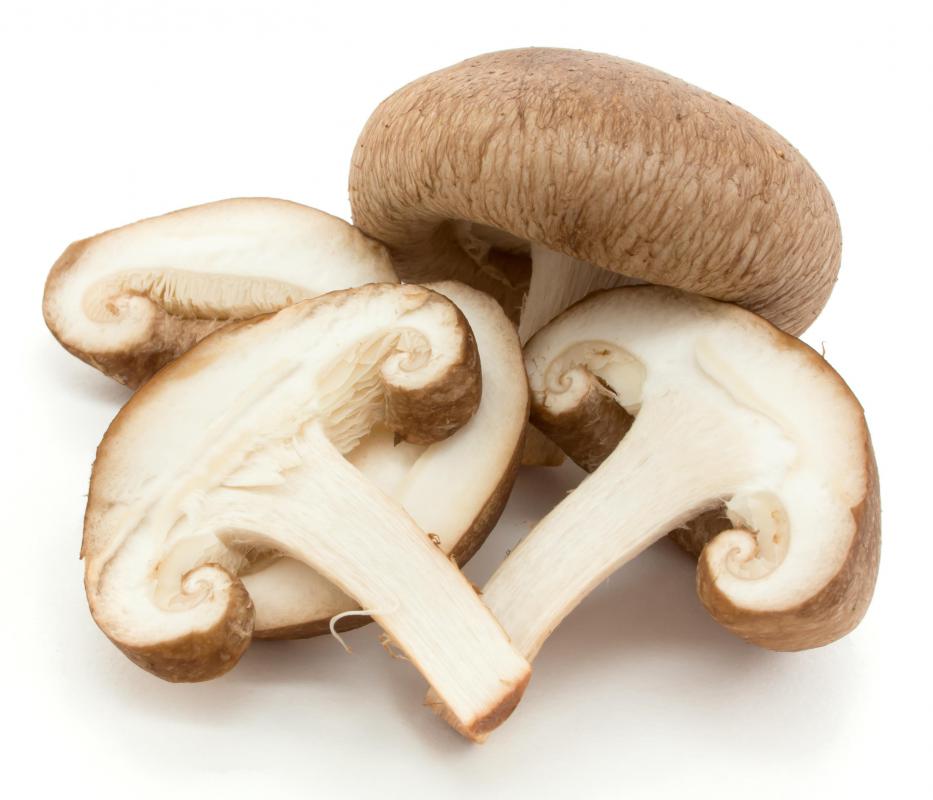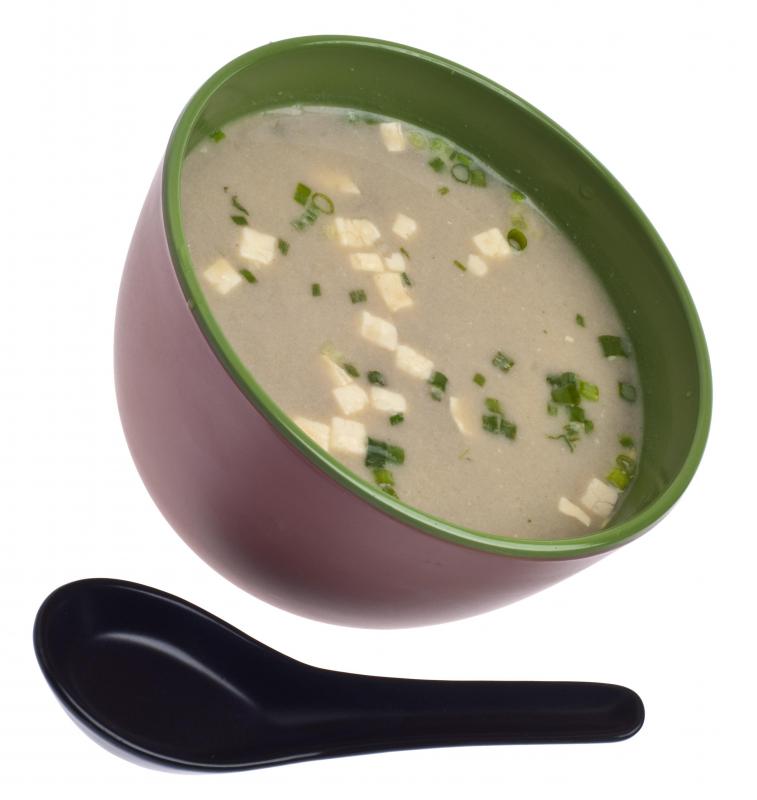At DelightedCooking, we're committed to delivering accurate, trustworthy information. Our expert-authored content is rigorously fact-checked and sourced from credible authorities. Discover how we uphold the highest standards in providing you with reliable knowledge.
What is Dashi?
Dashi is a broth usually made out of dried kelp and fish. A type of soup stock, it is the basis for many Japanese dishes and is a very important part of Japanese cooking overall. There are many variations of dashi, like shiitake dashi, which is made from shiitake mushrooms. This stock is often a source of umami, or savory quality, in any dish it is found in, and is quickly becoming a popular ingredient in various types of fusion cuisine. Fusion cuisine is the blending of different culinary traditions.
Umami is a Japanese term for savoriness. It has been included as one of the five basic tastes, which also include salty, sweet, bitter, and sour. Glutamic acid is an amino acid that is found in some foods like dashi, and is responsible for the umami flavor. When the tongue comes into contact with foods that are rich in glutamic acid — like cheese, meats, aged foods, and fermented foods — it translates the chemical as savoriness.

A broth, also known as stock, is a water-based food that is made by infusing the water with the flavors and scents of ingredients like meats, vegetables, herbs, and spices. Broths usually provide a base to build soups and sauces. Many cooks use ready-made broths. These convenient products often come in ready-to-use cans or cartons, as well as concentrated powders that only require the addition of water. Dashi can be purchased, or made at home by combining kombu — a type of dried kelp — with bonito flakes — a preserved, dried fish product — with water.

Bonito flakes or shavings are made from slapjack tuna. The fish is dried, fermented, smoked, and aged. The shavings are often bought pre-packaged, but larger chunks of the fermented fish can also be purchased. When used in dishes, bonito confers an umami taste.
Kombu is made from Saccharina japonica, a type of kelp that is cultivated throughout Korea, China, and Japan. Once harvested, the large, ribbon-like leaves of seaweed are allowed to dry and are packaged for sale. The finished product is leathery. Like bonito, kelp is rich in glutamic acid, as well as iodine and dietary fiber.

When preparing dashi, the kombu is usually allowed to soak in cold water for about 20 minutes. After the kelp has been rehydrated in this way, a handful of bonito is added, the pot is placed over heat, and the mixture is brought to a boil. Once boiling, the pot is removed from the heat and the kelp and bonito are strained out. Cooks usually press the liquid from the solids because this adds more flavor. The broth can also be made with cold water, by allowing the mixture to steep in the refrigerator for a few days.
Miso soup is made by combining dashi with the seasoning miso. Miso is a paste made from fermented rice, soybeans, or barley. The soup, which comes in many different varieties, is a Japanese culinary staple.
AS FEATURED ON:
AS FEATURED ON:













Discuss this Article
Post your comments